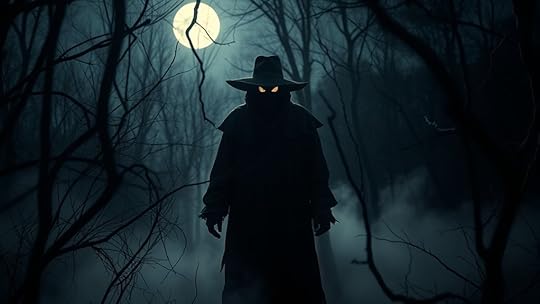The Coco: Spain and Portugal’s Boogeyman
In Spain and Portugal, The Coco serves as a legendary boogeyman used to keep children in line through stories of a mysterious, watchful creature hiding in dark corners like closets and under beds. It embodies both fear and cultural tradition, helping elders teach respect and morals across generations. Despite modern times, The Coco’s myth remains powerful, shaping social values. Keep exploring to discover more about how this mythical figure continues to influence these cultures today.
Key TakeawaysThe Coco is a mythical creature used to discipline children in Spain and Portugal, rooted in ancient storytelling traditions.It varies regionally but generally lurks in dark places to serve as a moral warning for kids.The Coco has evolved from ancient origins into a cultural symbol that maintains societal values and norms.It plays a significant role in childhood discipline, reinforcing respect, obedience, and safety through fear.Despite modern changes, The Coco remains a powerful folkloric figure, symbolizing community cohesion and moral lessons.
Have you ever wondered what makes “The Coco” so irresistible? It’s not just a simple figure of childhood fear, but a creature steeped in mythical origins and deep cultural significance. This boogeyman from Spain and Portugal embodies more than just a warning; it’s a reflection of centuries-old stories passed down through generations, shaping how communities teach children discipline and caution. The mythical origins of The Coco trace back to ancient times when people used stories of mysterious beings to explain the unknown and to keep children close and obedient. Over centuries, these tales morphed into a powerful symbol, one that parents and elders used to instill respect for rules and safety. Its mythical roots give The Coco a sense of timelessness, making it not just a creature of fright but a part of cultural identity. These stories often vary from region to region, but the core idea remains consistent: The Coco lurks in the dark, ready to punish those who stray from the path or misbehave. Additionally, cultural storytelling has played a vital role in preserving the myth and ensuring its continued relevance across generations. Culturally, The Coco holds a significant place in the collective consciousness of Spain and Portugal. It’s more than just a bedtime story; it’s a cultural touchstone. Children are told that The Coco is always watching, hiding in closets, under beds, or in dark corners, waiting to catch those who act out or disobey. This isn’t just about fear—it’s about teaching lessons in a way that sticks. The myth has evolved over time but continues to serve as a moral compass, guiding children towards good behavior. Parents celebrate the myth by sharing stories that reinforce community values and social norms. The Coco also symbolizes the importance of listening and respecting elders, reinforcing social cohesion. For many, it’s a shared cultural experience, connecting generations through stories that are as much about morality as they are about fear. In modern times, The Coco’s myth persists, even as societies become more secular and rational. Its cultural significance endures, often adapted into stories, songs, and even media aimed at children. The myth’s power lies in its ability to evoke a collective sense of caution and community. Whether it’s a bedtime tale or a folkloric symbol, The Coco remains an intriguing figure, rooted in mythical origins and crucial to cultural traditions. Its enduring presence reminds you how stories shape identities and behaviors, weaving fear and morality into a single, compelling figure that continues to captivate and instruct.
Frequently Asked QuestionsHow Has the Coco Myth Evolved Over Centuries?The myth of the Coco has evolved over centuries, rooted in cultural origins that serve as a warning for children. You might notice how it adapts with time, transforming from a simple scare tactic into more complex stories reflecting societal changes. As myths adapt, they often incorporate local beliefs and fears, making the Coco a versatile figure that continues to shape childhood lessons and cultural identity in Spain and Portugal.
Are There Regional Differences in the Coco Stories?Like shadows shifting in the night, regional differences in coco stories symbolize childhood fears adapting to local cultures. You’ll find variations in how the myth warns children across Spain and Portugal, reflecting cultural variations. These stories evolve with local traditions, dialects, and societal norms, turning the coco from a universal boogeyman into a personalized guardian or menace. So, your childhood fear might differ depending on where you grew up, shaped by regional storytelling nuances.
What Psychological Purposes Does the Coco Serve?The Coco serves to induce fear, helping you understand the importance of moral behavior. It acts as a psychological tool for parents and communities to encourage children to follow rules and avoid dangers. By instilling fear induction, it reinforces moral lessons subtly, making children more likely to learn right from wrong. This fear-based approach helps shape discipline and social norms, ensuring children grow up aware of consequences.
How Has the Coco Influenced Modern Popular Culture?Imagine dark streets whispering with urban legends where the Coco lurks behind shadows, shaping modern pop culture. This folklore symbolism inspires horror movies, Halloween costumes, and children’s stories, turning fear into entertainment. You see its influence in spooky decorations, themed events, and even memes, as the Coco’s chilling presence continues to echo in contemporary media, reminding you how ancient fears find new life in our digital age.
Are There Similar Mythical Figures in Other Cultures?Yes, many cultures have similar mythical figures serving as cultural symbolism and fulfilling mythological functions. For example, the Boogeyman appears worldwide, like the German Kobold or the African Tokoloshe, each representing fears used to enforce social norms or discipline. These figures often symbolize universal themes of caution, morality, and protection, helping communities transmit values and warnings across generations through storytelling and myth.
ConclusionSo next time you hear about La Coco, remember it’s more than just a myth. Imagine a parent warning their child about the dark, hoping to keep them safe—just like in a small Spanish village, where children stay close, afraid of what the Coco might do. These stories are meant to protect, but they also remind us of our universal fears. Knowing the truth helps you face those fears with courage, not superstition.



